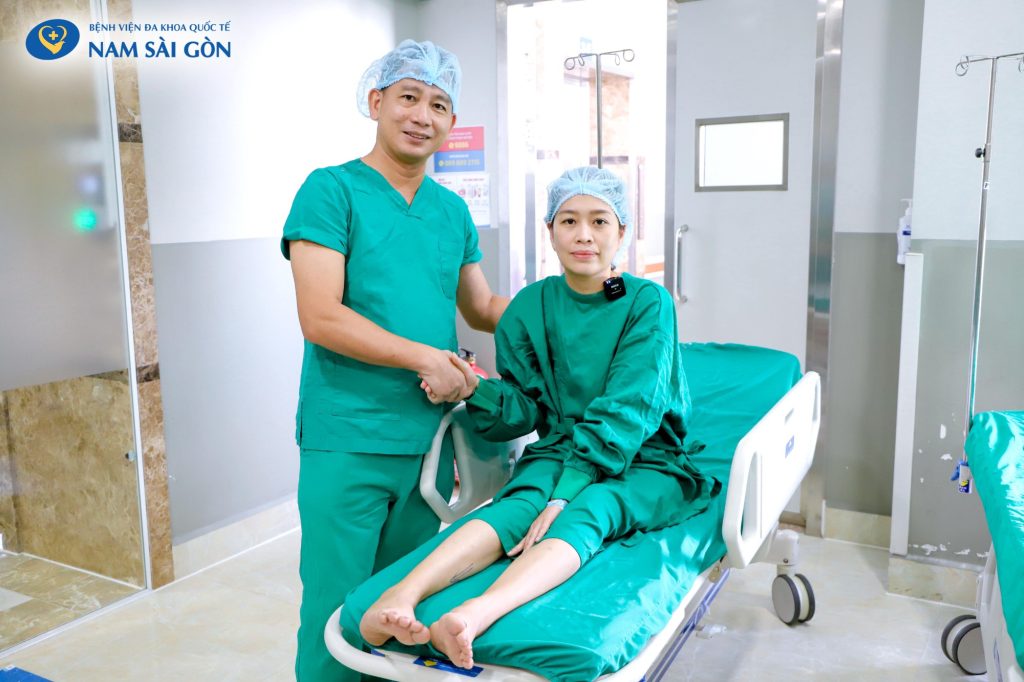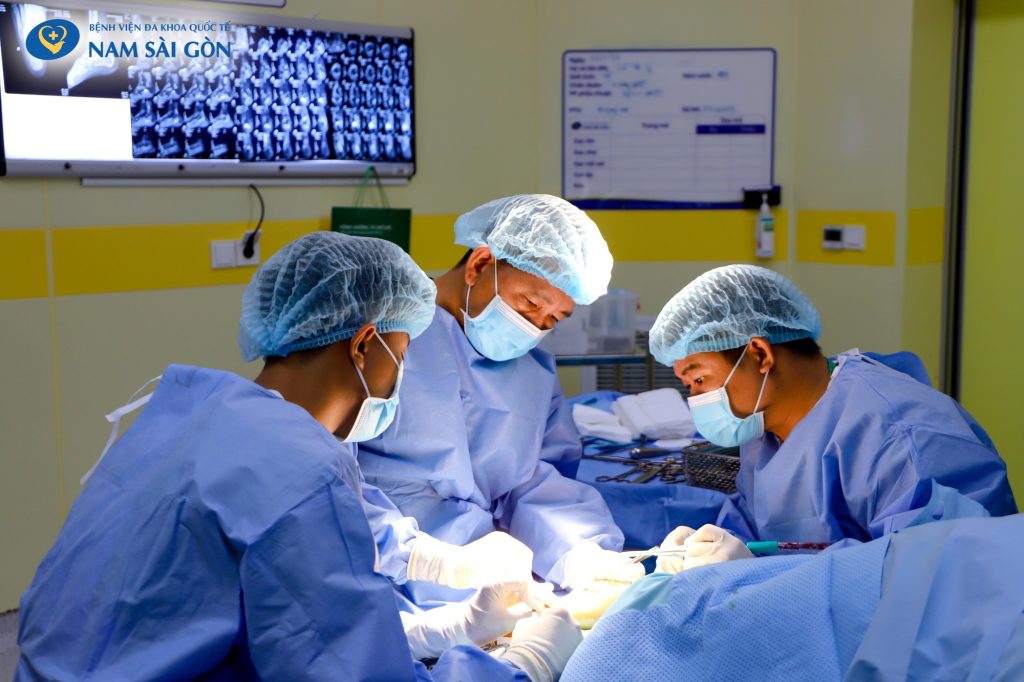WOMAN SUFFERED MULTIPLE FRACTURES ACROSS HER BODY DUE TO A RARE DISEASE
-
Author: BỆNH VIỆN ĐA KHOA QUỐC TẾ NAM SÀI GÒN
-
30/11/2023
-
106
Suffering from a rare and mysterious condition, a woman endured years of severe pain and multiple fractures before finally receiving life-changing surgery at Nam Sai Gon International General Hospital.
Her symptoms began in 2017 with persistent pain in the chest, ribs, back, hips, and feet, gradually spreading throughout the body. Ms. L. visited numerous hospitals across Vietnam over the years, yet no clear diagnosis was made. The pain intensified to an unbearable level — rated 10/10 on the pain scale — and was described by doctors as “agonizing to the point of near-death”. Despite suffering fractures in the pubic bone, ribs, tailbone, and right foot, she still managed to carry a pregnancy and deliver her baby via C-section in 2019.
A Ray Of Hope After Two Years Of Unanswered Questions
In 2021, after years of inconclusive tests, Ms. L. was referred to Dr. Ly Dai Luong, PhD, a leading endocrinologist. Through a series of lab tests, imaging scans, and bone density measurements, Dr. Luong initially suspected osteomalacia caused by hypophosphatemia. However, a definitive diagnosis required a PET-CT scan using a specialized radioactive tracer (Gallium-68 Dotatate), which was not available in Vietnam at the time. Recognizing the urgency, Dr. Luong reached out to professors at the National University Hospital of Singapore. With their support, Ms. L. underwent a PET-CT scan in Singapore, which confirmed the presence of a tumor causing tumor-induced osteomalacia (TIO). The culprit: a rare phosphaturic mesenchymal tumor (PMT) located in the right heel bone (calcaneus) that secreted excess FGF23, a hormone that disrupts phosphate–calcium–bone metabolism.
Osteomalacia is extremely rare, with fewer than 100 cases reported worldwide. In Vietnam, only one similar case was reported in 2016 without a confirmed cause.
Diagnosing and treating this rare disorder is a complex challenge. If left untreated, the patient risks further pathological fractures and lifelong pain. The standard treatment — lifelong phosphate and calcium supplementation — is not sustainable due to its side effects, including chronic diarrhea and serious impacts on liver and kidney function. Furthermore, traveling abroad for tumor removal posed both logistical difficulties and financial burdens.
To offer the best possible care, Dr. Luong collaborated with medical experts including Dr. Phan Chau Ha, Diagnostic Imaging Specialist, and Dr. Nguyen Trong Anh, Specialist Level II – Vice President of Ho Chi Minh City Sports Medicine Association and Senior Consultant at Nam Sai Gon International General Hospital. Dr. Trong Anh assessed the hospital’s advanced surgical facilities and confirmed that the complex tumor resection could be successfully performed locally.

After over an hour of meticulous surgery, the team at Nam Sai Gon International General Hospital, led by Dr. Nguyen Trong Anh, Specialist Level II, successfully removed the entire tumor from the patient’s heel bone. The specimen was sent to France for pathological analysis to confirm the initial diagnosis and ensure treatment accuracy.
“This is one of the rarest cases we’ve encountered — not only in Vietnam but globally”, shared Dr. Nguyen Trong Anh, Specialist Level II. “We had to plan every detail carefully. Preoperative MRI was essential to map the surgical route and assess the tumor’s size and position — it occupied almost the entire cross-section of the calcaneus”.

The surgical team skillfully approached the tumor without damaging nearby nerves or blood vessels while preserving the skin flap. Given the tumor’s size and location, the surgeons had to reconstruct the heel bone to maintain its structural integrity after tumor removal.
“We opted to use 10cc of synthetic bone graft, which was the most optimal and safe choice for the patient”, said Dr. Trong Anh.
After surgery, the patient entered a comprehensive rehabilitation program with ongoing monitoring of bone healing.
“We’re continuing to track her calcium and phosphate levels post-op”, Dr. Trong Anh added. “This helps us tailor the treatment plan, especially in case phosphate deficiency persists after tumor removal”.
Though this condition is rare, patients with chronic unexplained bone pain or muscle weakness should not ignore their symptoms. If conservative treatments fail to provide relief, it’s crucial to consult an endocrinologist to explore underlying metabolic or hormonal causes.
Nam Sai Gon International General Hospital
No. 88, Street No. 8, Trung Son Residential Area, Binh Hung Commune, Ho Chi Minh City.
Hotline: 18006767
info@nih.com.vn
Last updated: 15:43 07/08/2025





